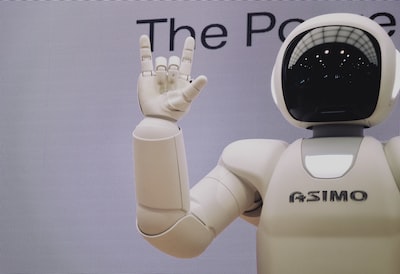In today’s rapidly evolving digital landscape, the threat of AI impersonation looms large, casting a shadow of uncertainty over the integrity of our online interactions. As artificial intelligence continues to advance, so too do the tactics employed by malevolent actors seeking to deceive, manipulate, and exploit unsuspecting users.
To navigate this treacherous terrain, organizations are turning to innovative quality assurance tactics that serve as a bulwark against the insidious infiltration of AI impersonators. From robust verification protocols to cutting-edge anomaly detection systems, a multifaceted approach is emerging to safeguard the veracity and trustworthiness of AI-powered encounters.
In this age of virtuality, staying one step ahead in the battle against deceptive machines has become paramount, making AI impersonation prevention tactics an urgent frontier for exploration.
Are You Prepared? Unveiling Effective Quality Assurance Tactics to Prevent AI ImpersonationIn an era where technological advancements continue to shape the way we live, Artificial Intelligence (AI) has emerged as a significant force. However, with its rise comes a new set of challenges, notably AI impersonation.
As industries look to integrate AI into their operations, ensuring its security and authenticity becomes a pressing concern. Developing robust AI impersonation prevention tactics is crucial to protect against potential threats.
In this article, we will delve into the subject of AI impersonation and explore the various techniques and strategies that can effectively safeguard against it.From Siri to self-driving cars, AI has seamlessly blended into our everyday lives.
However, its increasing capabilities have offered a golden opportunity for malicious actors to exploit the vulnerabilities within this technology. AI impersonation refers to the act of an individual or a machine pretending to be an AI-based system, often for nefarious purposes.
The consequences can be significant, ranging from data breaches to misinformation campaigns, and even financial fraud. To address this issue, organizations need to implement cutting-edge quality assurance tactics specifically tailored to prevent AI impersonation.
Continuous monitoring of AI systems, for instance, can help detect any suspicious activity or anomalies. By establishing a baseline behavior pattern, any deviations from the norm can be promptly identified and flagged for further investigation.
Another important aspect is the development of advanced AI authentication and verification methods. Employing multi-factor authentication processes is an effective way to ensure the legitimacy of AI systems.
Utilizing biometric data, such as voice recognition or fingerprints, in combination with traditional passwords, adds an extra layer of security against potential impersonation attempts.Furthermore, regular vulnerability assessments and penetration testing are essential to identify and mitigate vulnerabilities within AI systems.
By proactively searching for weaknesses and promptly remedying them, organizations can stay one step ahead of potential threats. Additionally, investing in comprehensive staff training to enhance awareness of AI impersonation tactics can equip employees with the necessary skills to handle suspicious activity and report potential breaches promptly.
While the battle against AI impersonation is a race to keep up with rapidly evolving technology, organizations must stay vigilant and adaptable. Collaboration between industry experts, cybersecurity firms, and academia is crucial to develop robust prevention tactics that stay ahead of the curve.
By staying prepared and implementing effective quality assurance measures, businesses can safeguard their AI systems, maintain data integrity, and protect themselves and their customers from the risks associated with AI impersonation.In conclusion, the rise of AI has brought with it new challenges, chief among them being AI impersonation.
To counter this threat, organizations must prioritize the development and implementation of effective quality assurance tactics. By continually monitoring system behavior, employing advanced authentication methods, conducting regular vulnerability assessments, and investing in comprehensive employee training, organizations can safeguard against AI impersonation and ensure the security and authenticity of their AI systems.
The journey towards effective prevention is ongoing, but one thing is clear: being prepared is key.
Table of Contents
Overview of AI impersonation risks and consequences.
Are you ready for the risks and consequences of AI impersonation? In the digital age, artificial intelligence has become more advanced, allowing it to imitate human behavior and deceive unsuspecting individuals. This raises concerns about security and the potential for malicious actors to use this technology for their own gain.
An overview of the risks and consequences of AI impersonation makes it clear that we need to be proactive in implementing effective quality assurance strategies to prevent such incidents. From unauthorized access to sensitive information to the manipulation of online platforms, the consequences of AI impersonation can be extensive and destructive.
Therefore, it is crucial to stay informed about the latest measures to prevent AI impersonation and take appropriate action to safeguard our digital identities and protect against this ever-changing threat. So, are you prepared?
Understanding the role of Quality Assurance in AI security.
Security concerns have reached unprecedented heights in today’s rapidly advancing era of artificial intelligence. As AI becomes more common in our daily lives, the potential for misuse and manipulation grows.
One of the most pressing threats is AI impersonation, where malicious actors use advanced algorithms to deceive and manipulate unsuspecting users. To combat this danger, institutions and organizations must use quality assurance as a reliable defense.
Implementing effective AI impersonation prevention guidelines through quality assurance will help safeguard against nefarious activities and ensure the integrity and trustworthiness of AI systems. Quality assurance plays a crucial role in identifying vulnerabilities and flaws in AI algorithms, providing a preemptive shield against impersonation attempts.
It is crucial to stay one step ahead in the battle for AI security as the AI landscape continues to evolve.
Essential tactics for effective quality assurance in AI systems.
Are You Prepared? Unveiling Effective Quality Assurance Tactics to Prevent AI ImpersonationIn the rapidly evolving landscape of artificial intelligence, the potential for AI impersonation is a growing concern. As machines become smarter and more capable, ensuring the quality and integrity of AI systems becomes paramount.
To address this, effective quality assurance strategies are crucial. Drawing from industry research and expert insights, this article delves into essential tactics for preventing AI impersonation.
By employing techniques such as robust testing frameworks, rigorous data validation, and comprehensive model auditing, organizations can reduce the risk of malicious AI impersonation. Trusted experts in the field, like the Institute for Ethical AI, advocate for the implementation of these proactive measures to safeguard against potential threats.
Their homepage provides valuable resources and insights for those looking to enhance their AI quality assurance strategies. Embracing them will undoubtedly bolster consumer trust and ensure the safe and effective deployment of AI technologies.
Implementing robust data validation and verification protocols.
AI is constantly changing, so it’s crucial to make sure the data used is authentic and reliable. As AI systems advance, so do the ways people try to trick them.
This article looks at methods to prevent AI impersonation and emphasizes the importance of data validation and verification protocols. Experts work hard to stay ahead of malicious actors who want to exploit AI systems for personal gain.
They use different approaches and techniques, but the goal remains the same: finding effective quality assurance tactics to prevent AI impersonation. However, organizations face challenges when trying to adapt and implement these protocols.
Let’s explore the world of AI impersonation prevention and its impact on advanced technologies.
Conducting thorough model testing and validation procedures.
AI impersonation has become a concerning issue as AI systems become better at mimicking human behavior. To tackle this problem, it is crucial to implement effective quality assurance tactics.
Thoroughly testing and validating AI models is the first line of defense. Developers can identify and fix vulnerabilities that could be exploited for impersonation by subjecting the models to a variety of scenarios.
Comprehensive evaluations, including stress testing and adversarial attacks, provide a robust assessment of the AI system’s performance and resilience. Additionally, techniques like anomaly detection and continuous monitoring can detect and address suspicious activities in real-time.
Being prepared with quality assurance techniques is essential to prevent AI impersonation and safeguard the integrity of AI systems.
Continuous monitoring and updating for enhanced AI security.
The rapid growth of artificial intelligence (AI) requires effective quality assurance techniques to prevent AI impersonation. In today’s digital world, AI technology is becoming more advanced, making it easier for malicious actors to create AI-powered impersonations.
This article explores the importance of continuous monitoring and updating as essential tactics to prevent AI impersonation. By consistently monitoring and updating AI systems, organizations can detect and address potential vulnerabilities before they are exploited.
With the ever-changing nature of AI, companies must take a proactive approach and implement strong security measures. This includes regular software updates and sophisticated anomaly detection algorithms to ensure AI remains secure.
As AI continues to revolutionize industries, it is crucial to be prepared and use effective strategies to protect against AI impersonation.
Revolutionize Your Email Experience with Cleanbox: Streamlining and Safeguarding Your Inbox
Cleanbox is an ingenious tool that promises to revolutionize your email experience by streamlining and safeguarding your inbox. Powered by state-of-the-art AI technology, Cleanbox offers a host of features designed to declutter your inbox and protect you from phishing and malicious content.
With its advanced sorting and categorization capabilities, Cleanbox ensures that your priority messages always stand out, saving you time and frustration. Whether you’re tired of sifting through countless spam emails or worried about falling victim to sophisticated impersonation tactics, Cleanbox has got you covered.
By effectively warding off suspicious emails and identifying potential threats, Cleanbox acts as a powerful quality assurance tool for AI impersonation prevention. Say goodbye to inbox chaos and hello to a secure and streamlined email experience with Cleanbox.
Frequently Asked Questions
AI impersonation refers to the act of an artificial intelligence system pretending to be a human or attempting to deceive users into thinking it’s an actual person.
AI impersonation can lead to various issues, such as misinformation, fraud, or identity theft. It can harm users’ trust in AI systems and disrupt the integrity of online interactions.
Some effective quality assurance tactics to prevent AI impersonation include: rigorous testing and validation of AI models, implementing user feedback loops, monitoring and analysis of AI-generated content, and using advanced AI detection algorithms.
Rigorous testing and validation help identify and rectify vulnerabilities that could be exploited for AI impersonation. It ensures the AI system behaves as intended and meets the required standards.
Implementing user feedback loops allows users to report and provide feedback on suspicious or deceptive AI interactions. This feedback helps in continuously improving the AI system’s ability to detect and prevent AI impersonation.
Monitoring and analysis involve constantly observing AI-generated content to identify any signs of AI impersonation. This helps in identifying patterns, anomalies, or suspicious activities, which can then be addressed promptly.
Advanced AI detection algorithms use machine learning techniques to analyze and identify patterns or signals associated with AI impersonation. They can detect subtle cues in language, behavior, or content to minimize the risk of AI impersonation.
In a Nutshell
In a world where technology is advancing at an astonishing pace, the emergence of artificial intelligence (AI) impersonators has become a growing concern. As these sophisticated algorithms learn to mimic human behavior, the potential for malicious impersonation rises, making it crucial for organizations to implement effective quality assurance tactics.
With an array of techniques available, from machine learning algorithms to behavioral analysis, it is imperative to adopt a multi-layered approach for optimal security. By continuously monitoring and updating AI models, organizations can stay one step ahead of would-be impersonators, ensuring the preservation of trust and integrity.
Furthermore, robust testing and validation mechanisms are vital to catch any vulnerabilities or unintended consequences that may arise. While AI impersonation prevention remains an ongoing challenge, with diligent quality assurance and a commitment to innovation, we can navigate this evolving landscape with confidence.
The future of AI holds tremendous promise, but it is our responsibility to safeguard it against misuse. Together, let us forge a path towards a secure and ethical AI-powered future.








 in Wyoming
in Wyoming